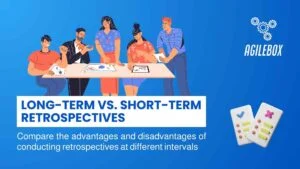Velocity measures how much work a team can complete in a given period, such as a sprint or an iteration. It is usually expressed in terms of story points, units of estimation that reflect the complexity and effort of a user story.
Velocity is essential for Agile projects because it helps the team and the stakeholders plan, prioritize, and track the project’s progress. By knowing the team’s velocity, they can estimate how long it will take to deliver the desired features and value to the customers.
The Relationship between Velocity and Story Points
Velocity is a metric that shows how much work a team can complete in a sprint based on the story points assigned to each task. Story points are a relative measure of a task’s complexity, effort, and uncertainty, as estimated by the team members.
The team is responsible for defining the story points for each task, using their criteria and experience. This way, the team can align their expectations and communicate better about the work. As the team completes more sprints, they can adjust their story point estimates and improve their velocity prediction.
Velocity is not a fixed number but a range that can vary depending on several factors. For example, the team’s composition, experience level, and external dependencies can affect the velocity. Therefore, velocity should not be used as a performance indicator but as a planning tool that helps the team deliver value to the customer.
Calculate the Agile Velocity
Teams add the total number of story points completed in each sprint to calculate velocity. The average velocity over a few sprints can then be used to estimate how much work the team can complete in future sprints.
Here is the formula for calculating velocity:
Velocity = Total story points completed / number of sprints
For example, if a team completes 10 story points in their first sprint and 12 story points in their second sprint, their average velocity is 11 story points per sprint.
Velocity in Capacity Planning
Capacity planning is a vital part of Agile project management. It helps the team estimate how much work they can handle in each sprint based on their past performance and current availability.
Velocity is a key metric for capacity planning. It measures how many units of work (usually story points) the team can complete in a sprint. The team can understand their capability and capacity for future sprints by tracking their velocity over time.
Historical velocity data can also inform capacity planning decisions. For example, the team can use their average velocity to forecast how many sprints they need to finish a project or a release. They can also use their velocity range to account for uncertainty and variability in their estimates.
Velocity can help the team find a sustainable workload that maximizes productivity and quality. By comparing their planned capacity with their actual velocity, the team can identify gaps or issues affecting their performance. They can also adjust their capacity based on factors such as team size, skill level, dependencies, and external events.
Predicting Project Timelines with Velocity
Using velocity, project managers can estimate how many sprints are needed to finish the project and when the expected completion date is.
To predict project timelines with velocity, project managers can use historical data from previous sprints to calculate the team’s average velocity. Then, they can divide the total amount of work remaining by the average velocity to get the number of sprints required. This number can be multiplied by the sprint duration for the estimated completion time.
However, predicting project timelines with velocity is not an exact science. Many factors can affect the team’s velocity, such as changes in scope, quality, team size, and external dependencies. Project managers should monitor the velocity trends and adjust their predictions accordingly. They should also communicate with the stakeholders and the team about any changes or risks impacting the project timeline.
Factors Affecting Velocity and Its Limitations
Velocity is a valuable metric for agile teams but is not a constant or guarantee. Many factors can affect how fast a team can deliver value to customers, such as:
- Team dynamics: How well the team members collaborate, communicate, and resolve conflicts can impact their productivity and quality.
- Skill levels: The team’s expertise, experience, and learning abilities can influence speed and efficiency.
- External disruptions: The team’s exposure to interruptions, dependencies, and changes in requirements or priorities can affect their focus and alignment.
These factors can vary over time, making velocity-based predictions unreliable or inaccurate. Moreover, velocity is based on assumptions and historical data that may not reflect the current or future reality of the project. Therefore, agile teams should use velocity as a guide, not a goal, and adjust their plans accordingly.
Sum Up
Velocity is a key metric in Agile development that measures how much work a team can complete in a given period. It helps Agile teams plan their capacity and estimate project timelines more accurately.
Velocity also reflects how well a team performs and adapts to changing requirements and feedback. By tracking and analyzing their velocity, Agile teams can identify and address any issues or impediments that affect their productivity and quality.
AgileBox’s Planning Poker for Jira helps your remote team plan and estimate better. You can use a game dashboard with drag & drop and inline editing features. Feel free to choose from different decks, such as Fibonacci numbers, T-shirt sizes, or custom ones. You can chat with your team in real-time without switching apps. Download AgileBox – Agile Planning Poker, Retrospectives, Daily Standup for Jira from the Atlassian Marketplace today.



